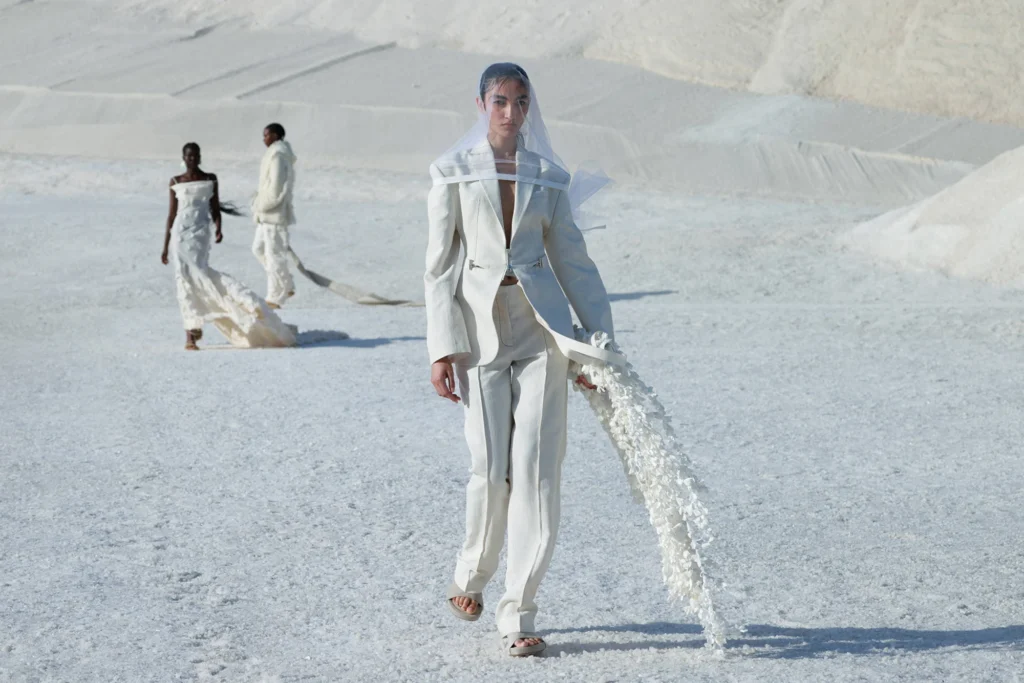
Editor’s Note: This article was originally published by The Business of Fashion, an editorial partner of Style.
Just an hour after getting engaged in Venice, Italy last year, Christyne de Quesada began scouring the internet for white dresses to wear to her many upcoming wedding-related events: An engagement party, a bachelorette weekend, a civil ceremony at a courthouse and a bigger celebration in Mexico City.
But the Miami-based human resources manager had a hard time finding good quality, under $1,000 ensembles that reflected her personality.
“It actually drove me a bit crazy,” de Quesada said. “I bought about seven things and returned all of them.” Instead, she decided to look beyond classic bridal wear brands and retailers. She eventually settled on an ivory two-piece set by Shanghai-based label ShuShu Tong, which she bought from the e-tailer Ssense, for her civil ceremony, a Vera Wang gown she describes as “traditional and very princess-like” for her Mexico City wedding ceremony and a bespoke ivory skirt and corset set by Florida-based bridal designer Gabriella Arango, complete with Gucci shoes, for the reception.

A bridal look from Collina Strada, presented at New York Fashion Week in September 2022. Aurora Rose/Shutterstock
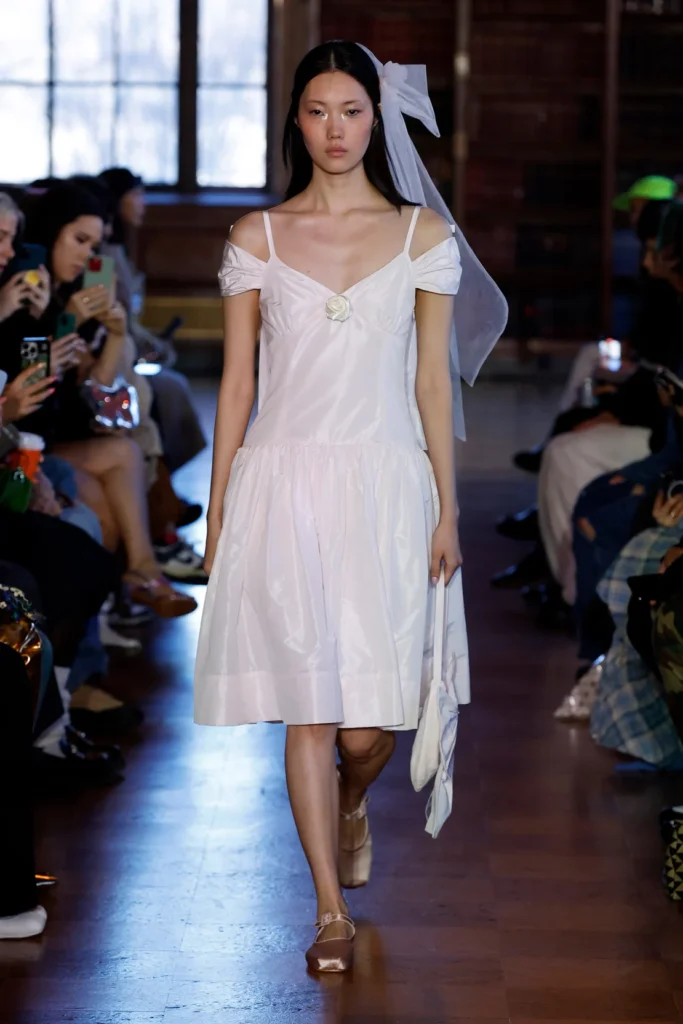
Millennial and Gen-Z brides-to-be like de Quesada are no longer shopping for just a wedding dress, but an entire wardrobe for pre- and post-wedding events. That breadth is propelling the global bridal wear market, which is projected to grow at a rate of 3.5 percent annually and is expected to reach $83.5 billion by 2030, according to the Global Bridal Wear Market Industry report.
But it’s not companies like David’s Bridal (which filed for bankruptcy and sold to Cion Investment Corp last year) that are benefitting. In order to find less cookie-cutter ensembles that are more reflective of their personal style, this new generation of brides are shopping outside the traditional bridal market.
“The bridal industry is very much like an old boys club. They live by ‘If it’s not broken, don’t fix it’ and are very comfortable with the limited options that they’ve given you,” said Caroline Crawford Patterson, a bridal stylist and designer. “What they don’t realize is that the consumer is different and there’s a big opportunity to shake things up.”
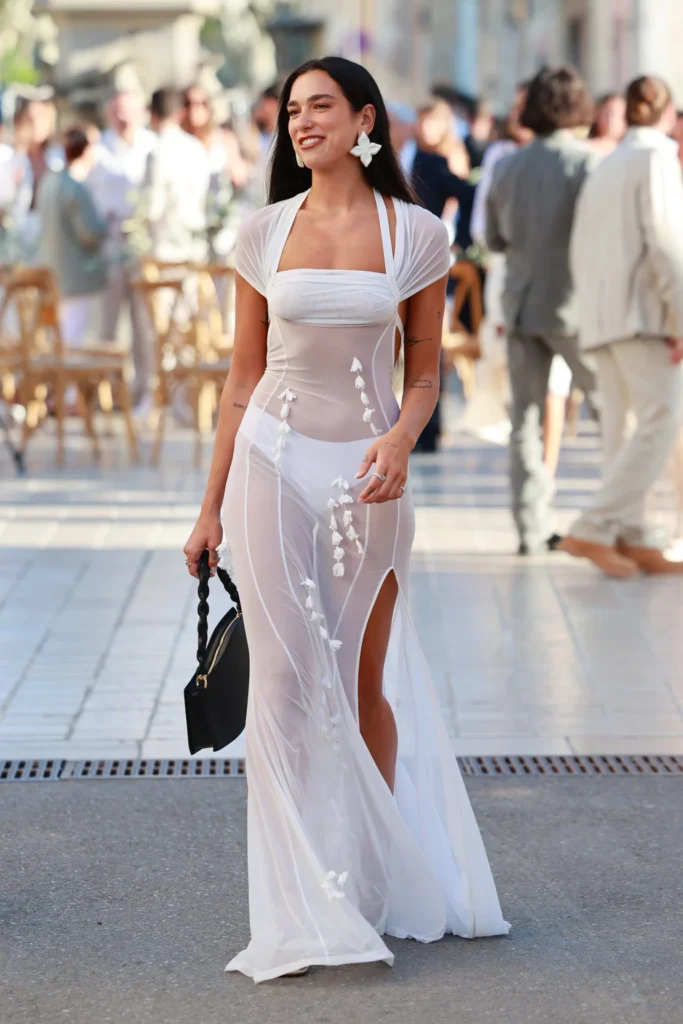
New opportunities in the bridal market
After the industry was brought largely to a halt in 2020, weddings returned to pre-pandemic levels last year, with couples hosting over 2 million parties , according to The Wedding Report. But the post-pandemic bridal wear landscape is remarkably different.
Historically, brides have been limited to independent boutiques, department stores and chains like David’s Bridal. Now, though, brides-to-be are open to wearing any white dress and are casting a wider net.
It’s an evolution of a space that was stagnant for a long time. “Salons could get away with offering dresses that weren’t chic or suited the fashion-forward bride or weren’t size inclusive and the consumer, who is already spending a lot of money, just had to bear it,” said Crawford Patterson, who got married in 2021.
Anthropologie was one of the first non-bridal retailers to enter the space with the launch of its Bhldn line in 2011. (It’s now called Anthropologie Weddings.) Today, Reformation, Abercrombie & Fitch and Revolve all offer wedding edits on their websites, as does The RealReal. Even fast fashion brands like ASOS, Forever 21, Lulus and Shein are increasing the number of bridal styles they carry.
It’s not just mass retail taking advantage. New York-based designer Jackson Wiederhoeft launched a made-to-order bridal segment in 2020 and now spends up to a year and a half developing wedding dresses for clients including initial appointments, fittings, alterations and advising. Despite the investment in time and resources, Wiederhoeft says the effort is “worth it,” as they get to develop an intimate relationship with consumers.
“It’s not just a dress for many people, it is the dress,” said Wiederhoeft.
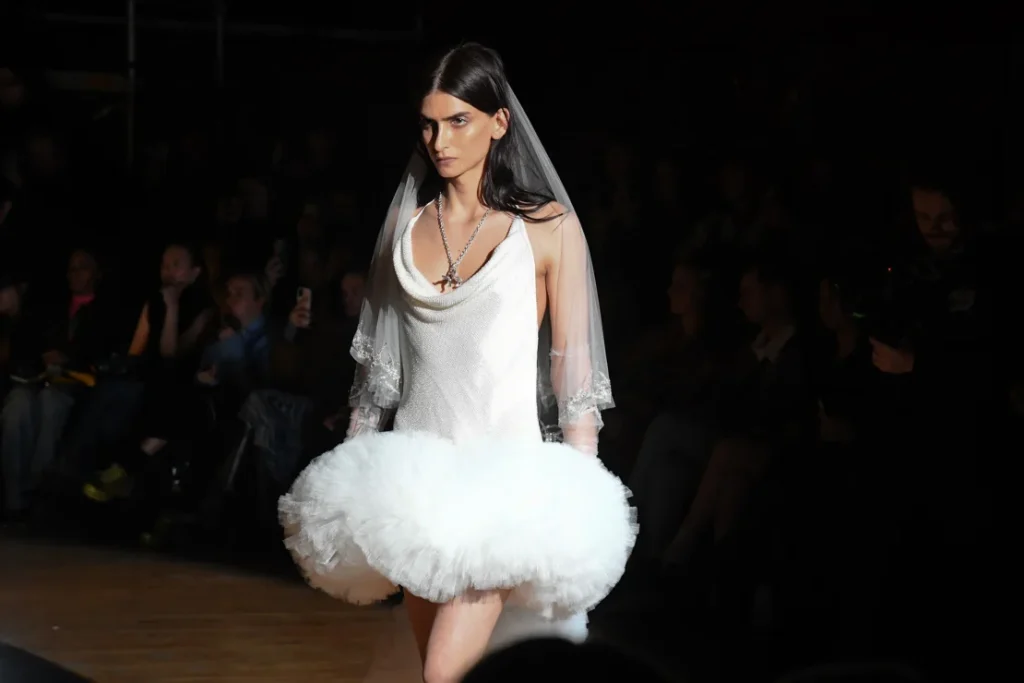
For an emerging designer like Wiederhoeft, bridal is something of a safety net, serving as “a floating line of credit” for the rest of their business. With bridal, Wiederhoeft is able to collect 100 percent of the garment’s cost upfront and directly from the client in order to pay for production, material and overhead costs. A Wiederhoeft wedding dress can cost between $3,000 and $25,000 for ready-to-wear bridal garments; pricing for custom dresses starts at $25,000. And unlike ready-to-wear, the brand’s bridal segment is not subject to discounting.
“Some of the garments I made in my apartment four years ago are still in our showroom. I still use them as sale samples, and the styles are quite evergreen,” they said. “Whereas ready-to-wear has the shelf life of an avocado.”
What today’s brides want — and don’t
As younger Millennials and Gen-Zers, the oldest of whom turn 27 this year, approach the altar, their ceremonies can differ greatly from previous generations, including their parents. (According to the US Census Bureau, the average American woman is 28.6 years old when they get married and the average American man is 30.5 years old.)
Young people today are more likely to support same-sex and interracial marriage, enter into non-traditional relationships such as polyamory, and are more likely to forgo marriage entirely in favor of cohabiting with a partner long-term, according to research from Pew Research Center.
“Some of my clients are trying to push against the grain of conventional weddings and are focused on spending money on a house,” said Hillary Taymour, founder and creative director of Collina Strada, who said her clients are looking to splurge on pieces that can be re-worn.
Taymour said that today’s brides believe “anything can be a wedding outfit.” Her clients are opting for colorful designs and unconventional jewelry, including the brand’s frog ring, which typically retails for $80, that couples have commissioned as engagement or wedding bands to mark the occasion.
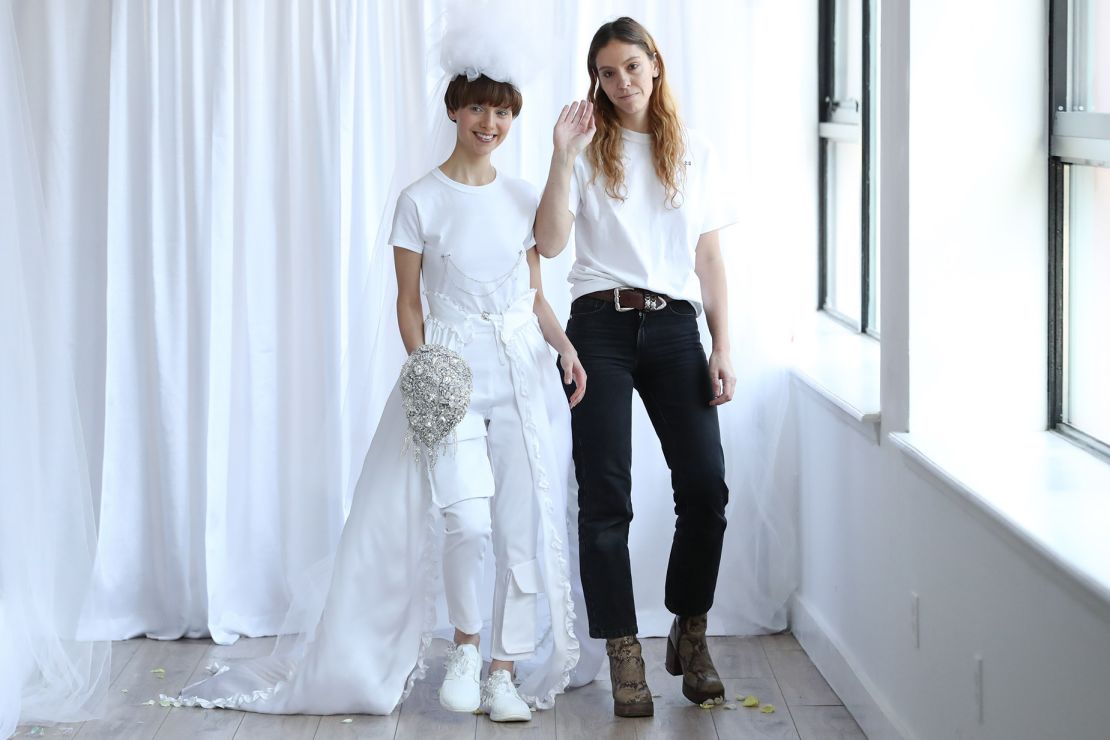
Designers like Hillary Taymour at Collina Strada (pictured above with a model in a bridal look during New York Fashion Week in February 2018) hoping to service this cohort are looking beyond weddings and are creating garments for different types of commitment ceremonies. JP Yim/Getty Images
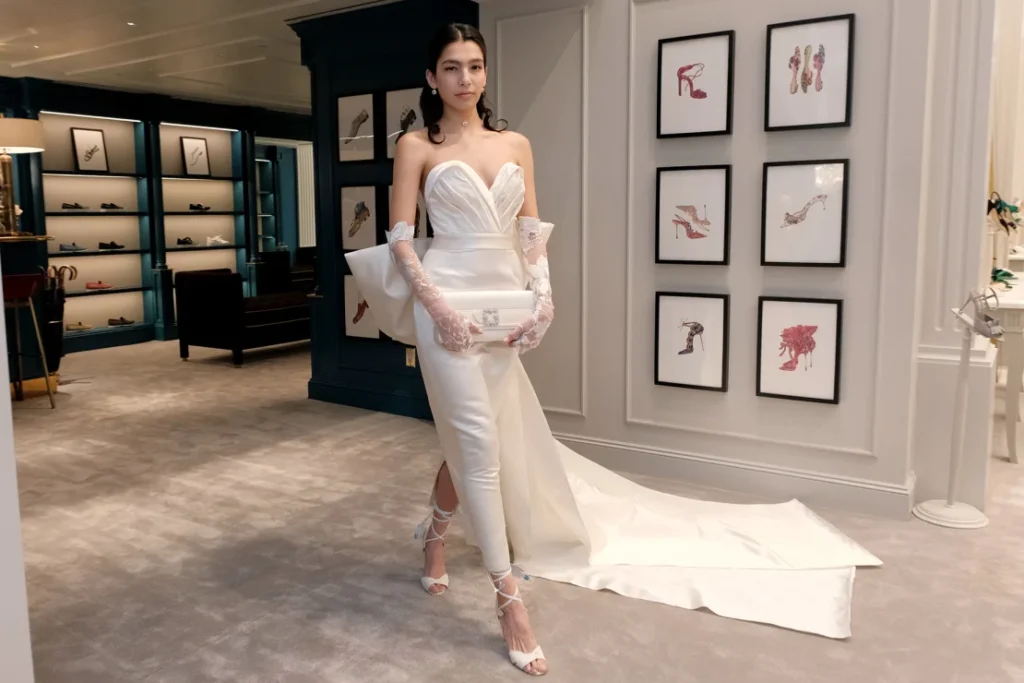
Catering to a broader spectrum of bridal wear can be beneficial even for a business with a historic focus in the sector, said Andrew Kwon, founder and creative director of his namesake label. He launched an eveningwear line alongside bridal in 2022.
“One of the main challenges with bridal is the lack of repeat clients,” said Kwon. “Tapping into eveningwear and colored dress has allowed me to bring in non-traditional brides, their bridesmaids and even their mothers into the fold.”
Retailers hoping to capture this new, forward-thinking bridal consumer are updating their assortment to reflect changing attitudes towards weddings. Last month, e-commerce retailer Ssense launched its second “anti-bridal” capsule collection which featured unorthodox gowns, flower girl dresses and accessories.
“We speak to an audience that’s very open-minded and fluid,” said Brigitte Chartrand, vice president of womenswear buying and the Everything Else segment at Ssense. “The products we commissioned didn’t feel necessarily classic … it brings that differentiation of what bridal could be.”
